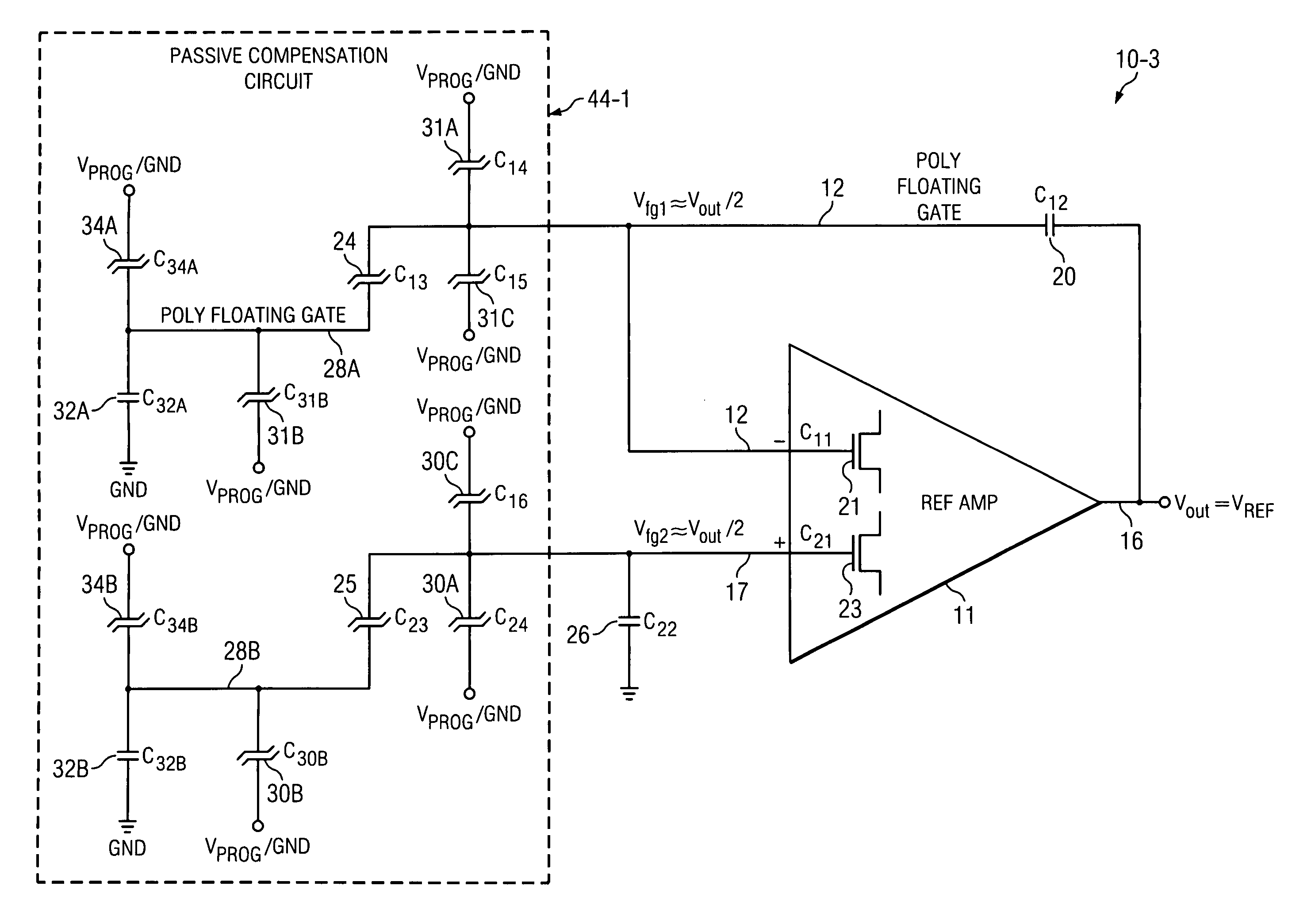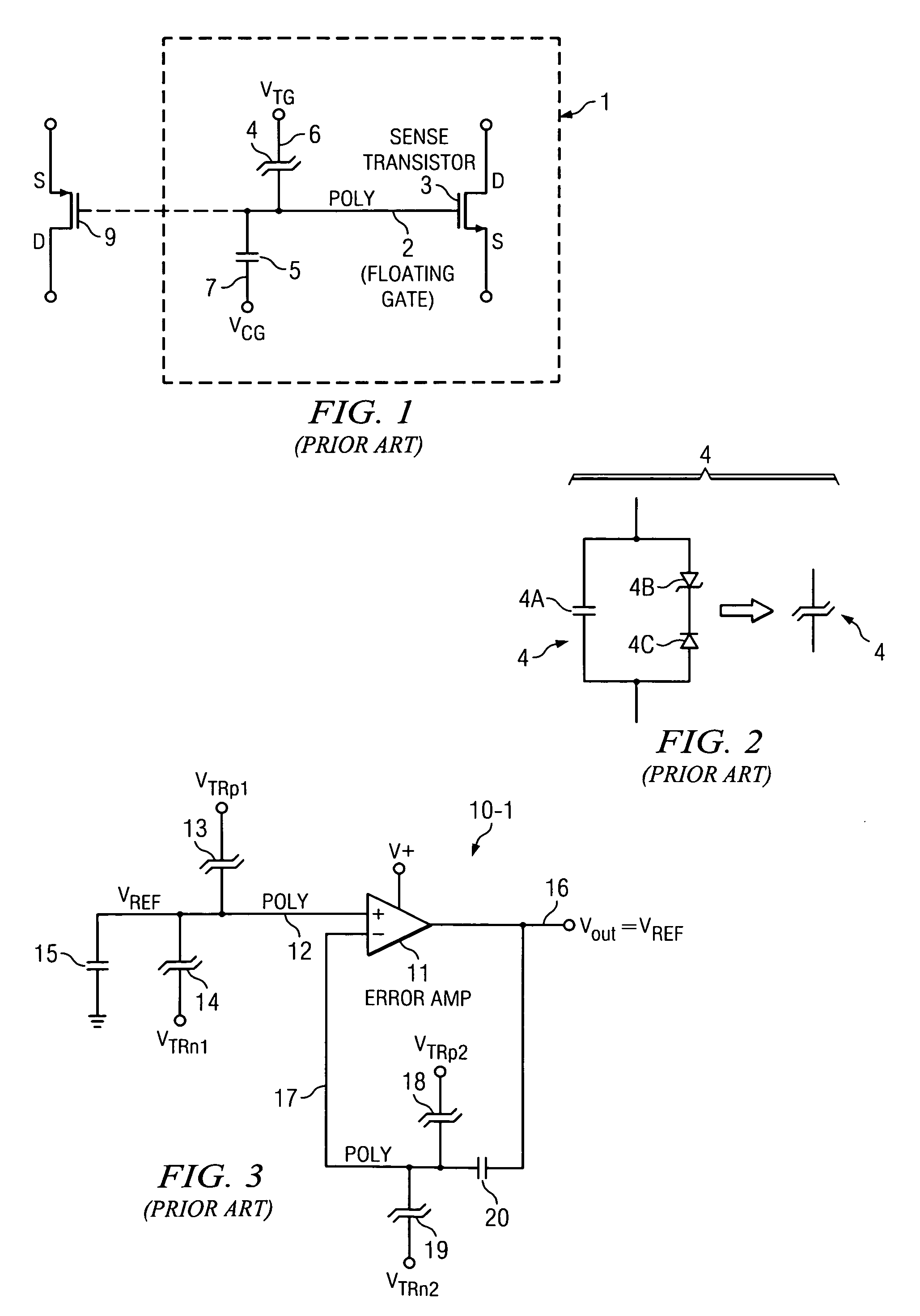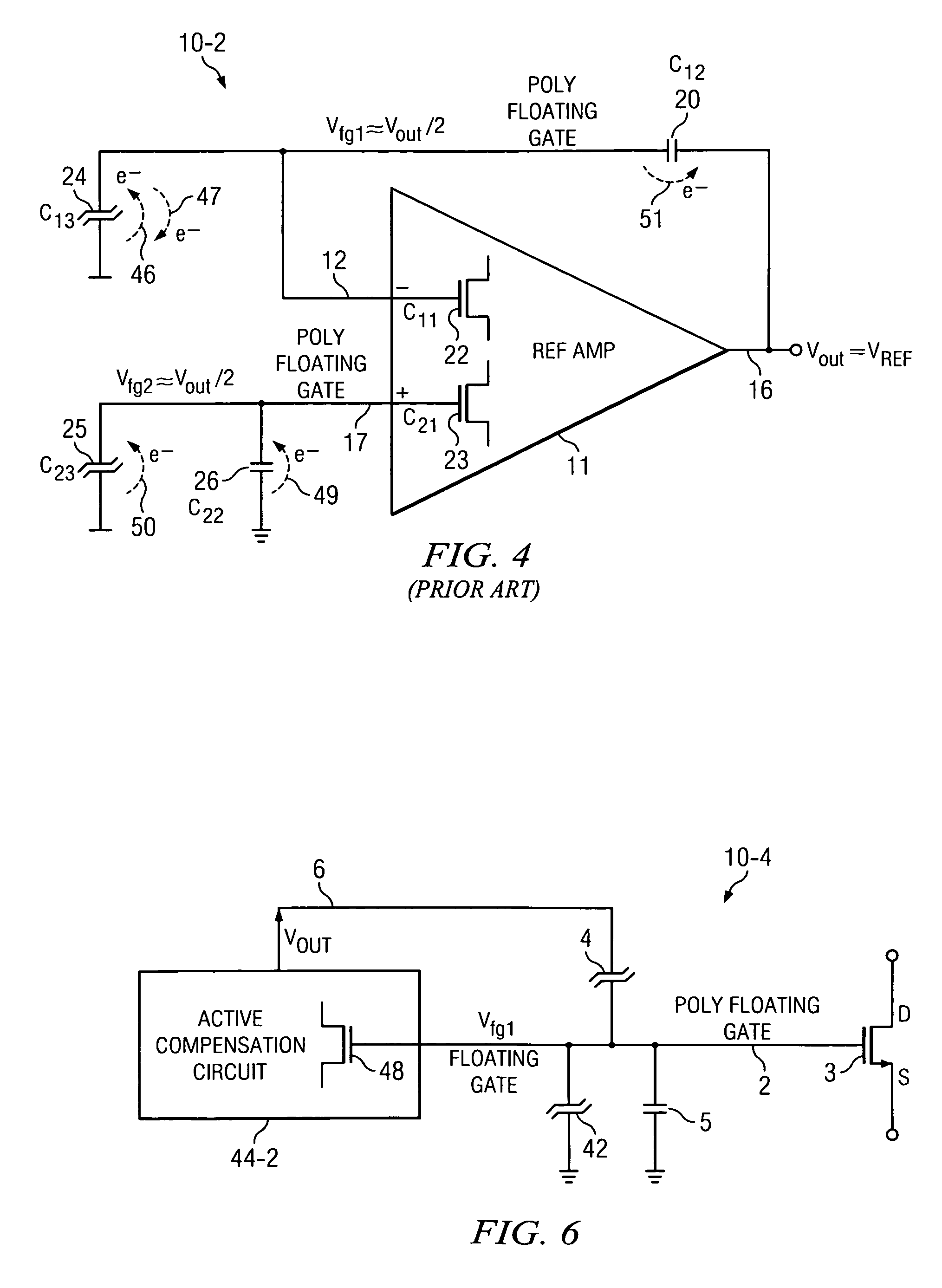Analog floating gate charge loss compensation circuitry and method
a technology of loss compensation circuitry and analog floating gate, which is applied in the direction of electric variable regulation, process and machine control, instruments, etc., can solve the problems of programming accuracy of the amount of charge stored, the loss of charge from the floating gate, and the switch of the stored sta
- Summary
- Abstract
- Description
- Claims
- Application Information
AI Technical Summary
Benefits of technology
Problems solved by technology
Method used
Image
Examples
Embodiment Construction
[0067]Referring to FIG. 5, AFG voltage reference circuit 10-3, which may be included in an analog integrated circuit chip, includes error or reference amplifier 11: Reference amplifier 11 has its (−) input connected to the gate of an input transistor 21 in reference amplifier 11 and has its (+) input connected to the gate of an input transistor 23. The gate of (−) input transistor 21 is formed by a portion of floating gate conductor 12. Floating gate 12 also forms a first plate of each of tunneling region 24, tunneling region 31A, tunneling region 31C, and feedback capacitor 20. The capacitances of (−) input transistor 21, (+) input transistor 23, and feedback capacitor 20 are C11, C21, and C12, respectively. The capacitances of tunneling regions 24, 31A, and 31C are C13, C14 and C15, respectively. The second plate of feedback capacitor 20 is connected by conductor 16 to the output of reference amplifier 11, which produces a reference voltage Vout=VREF on conductor 16. The second pl...
PUM
 Login to View More
Login to View More Abstract
Description
Claims
Application Information
 Login to View More
Login to View More - R&D
- Intellectual Property
- Life Sciences
- Materials
- Tech Scout
- Unparalleled Data Quality
- Higher Quality Content
- 60% Fewer Hallucinations
Browse by: Latest US Patents, China's latest patents, Technical Efficacy Thesaurus, Application Domain, Technology Topic, Popular Technical Reports.
© 2025 PatSnap. All rights reserved.Legal|Privacy policy|Modern Slavery Act Transparency Statement|Sitemap|About US| Contact US: help@patsnap.com



